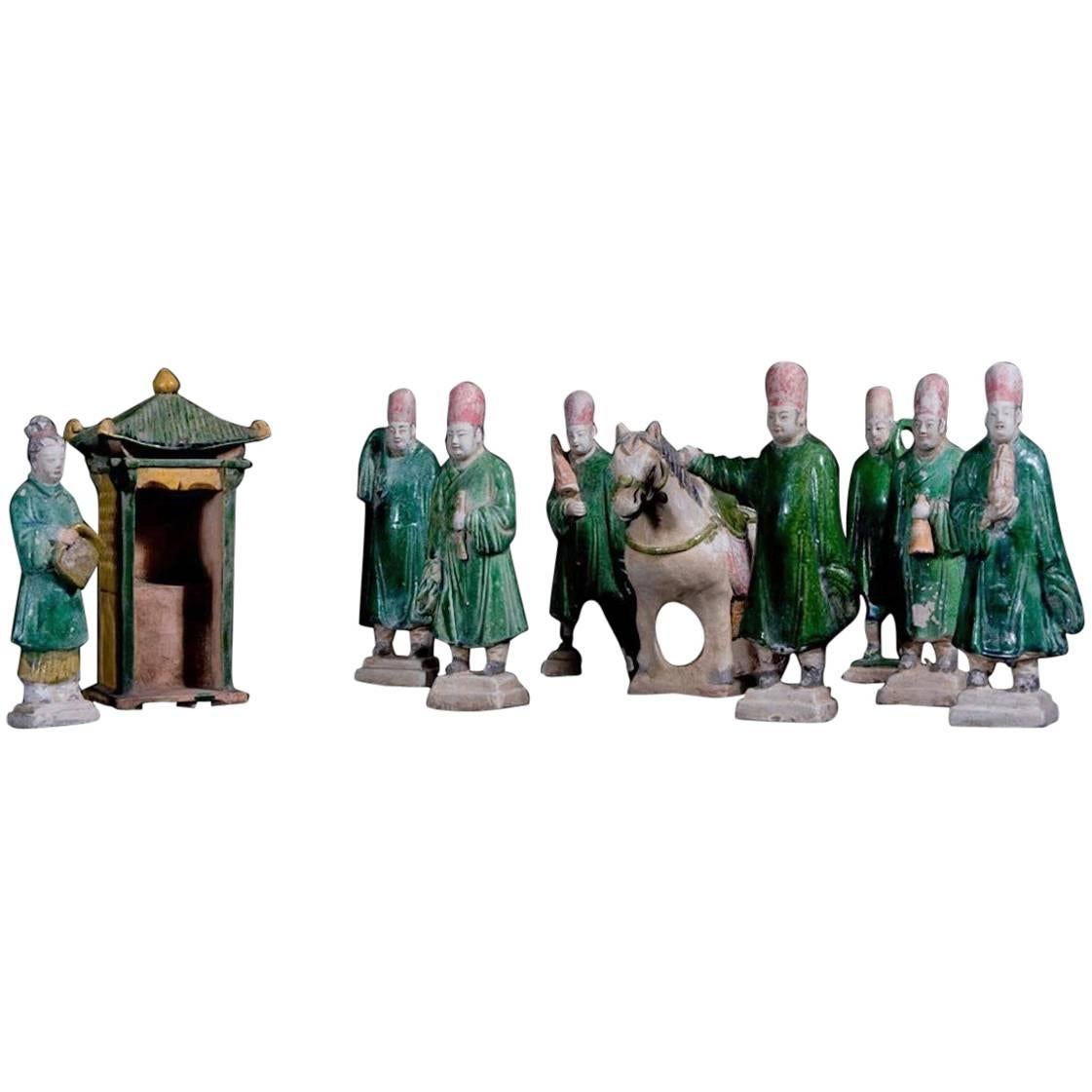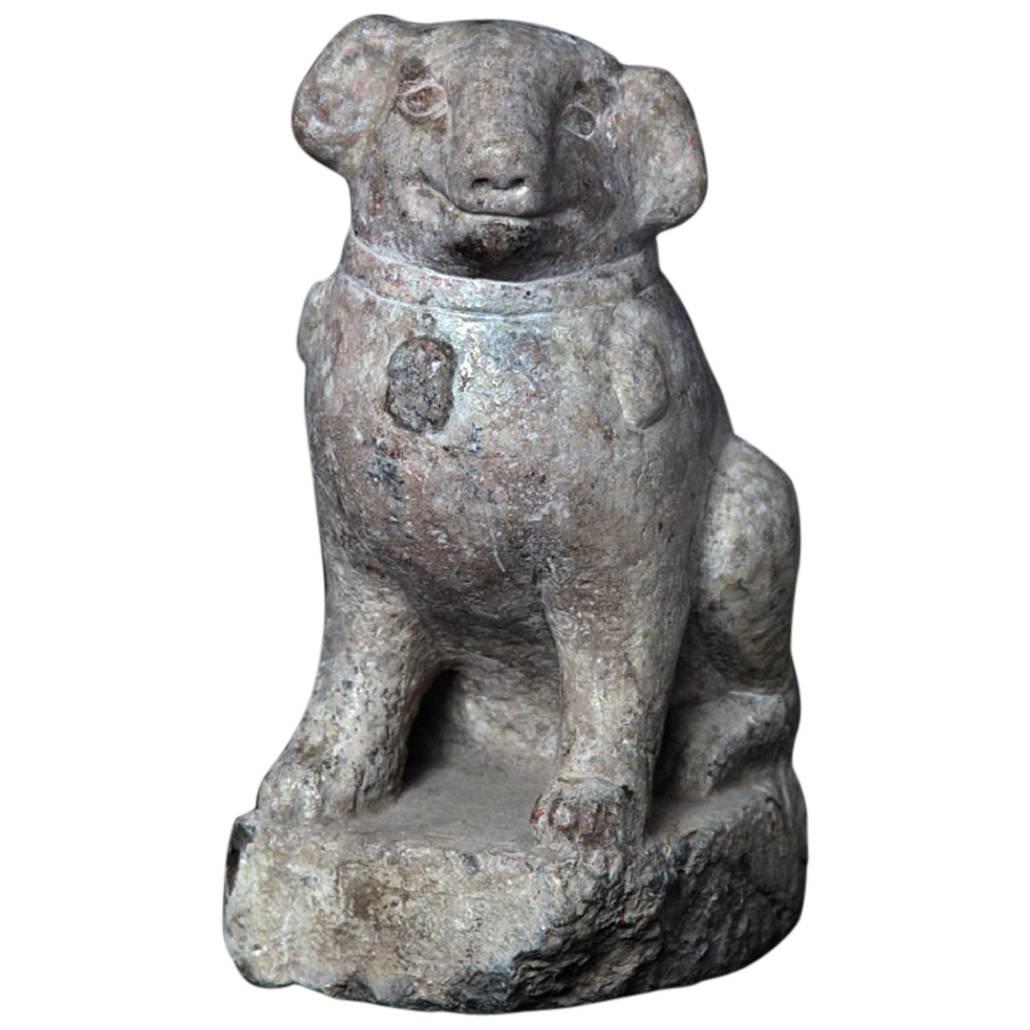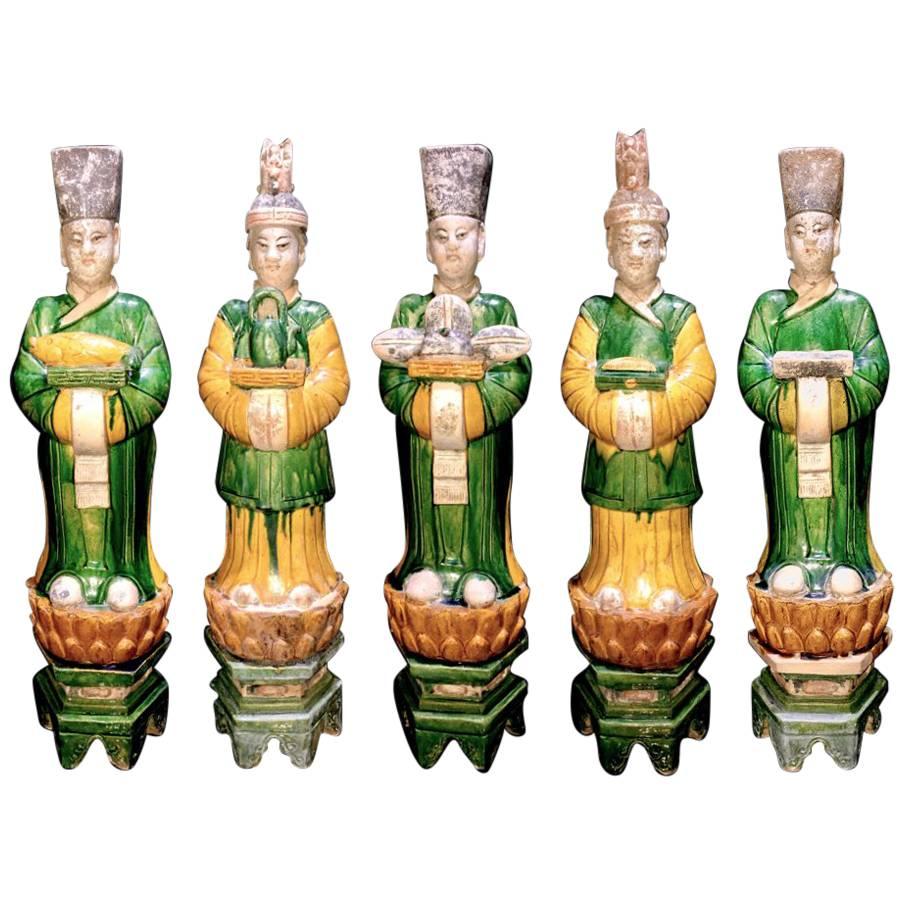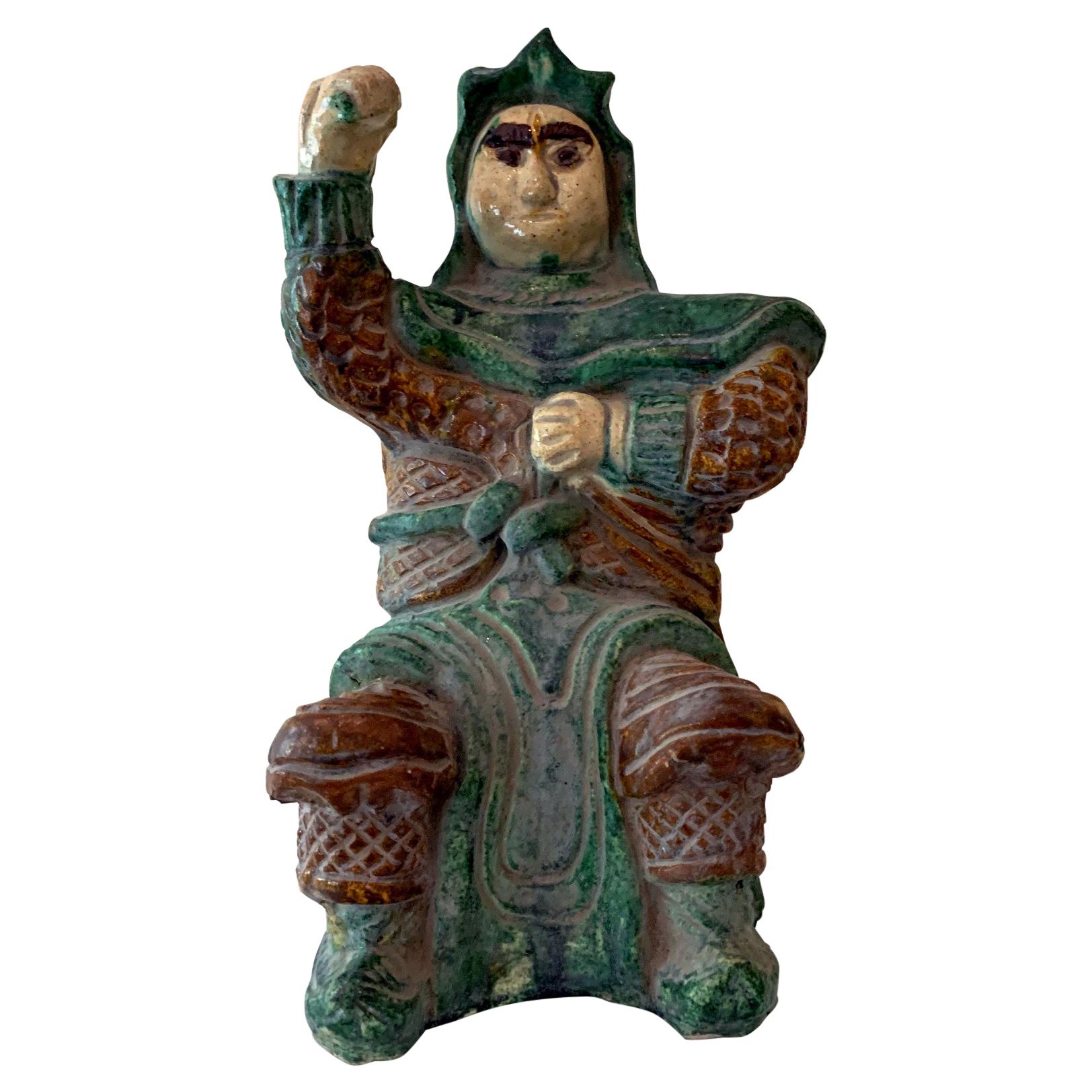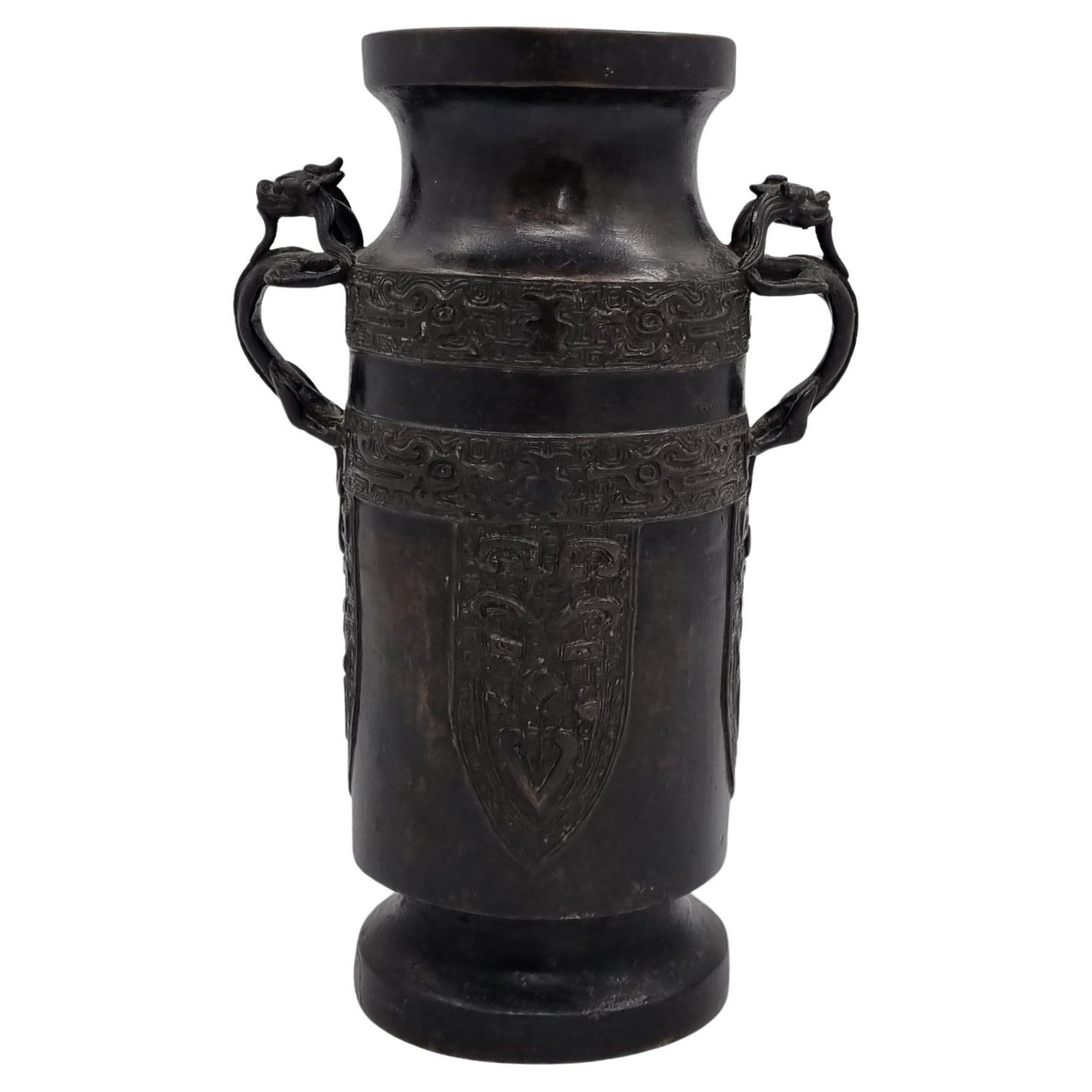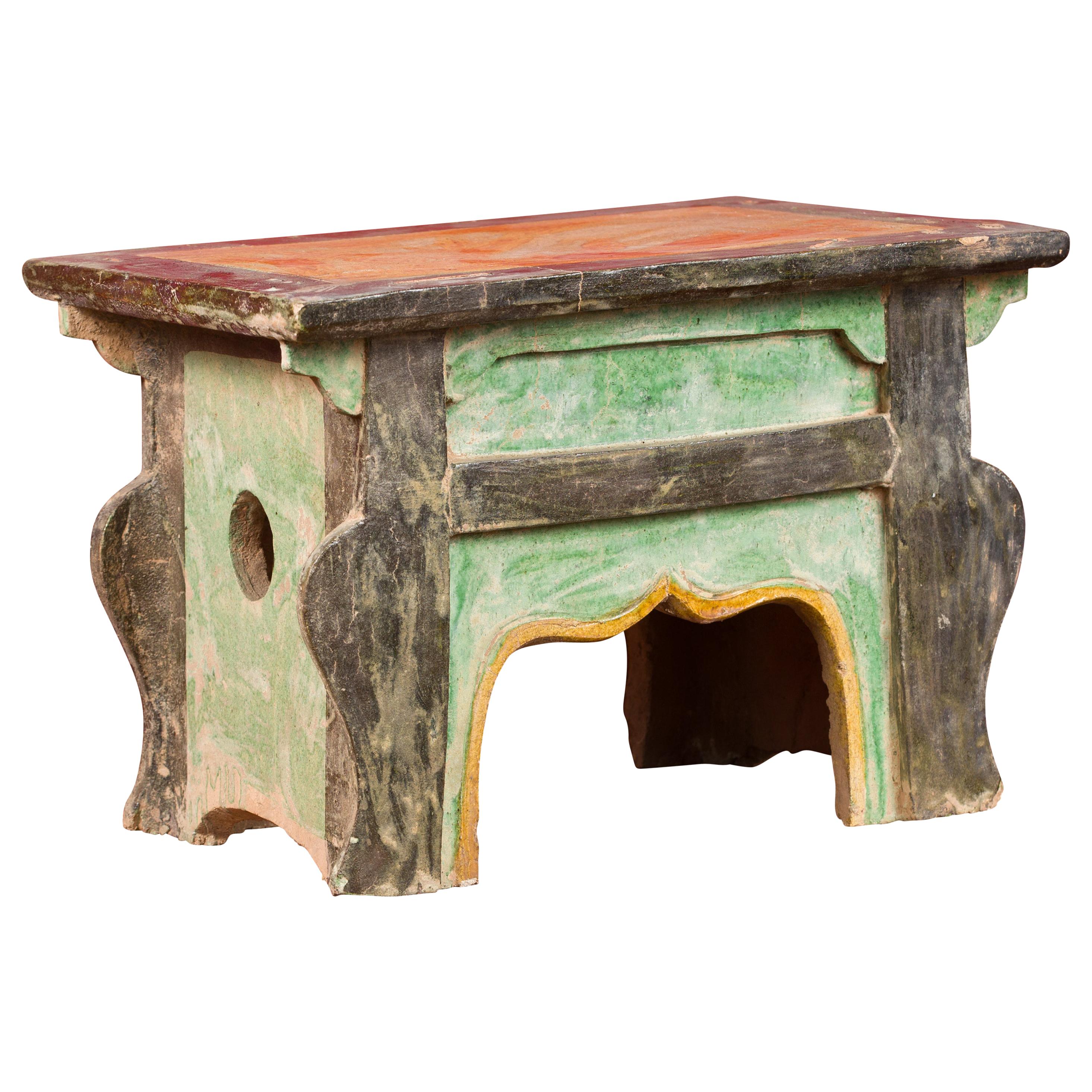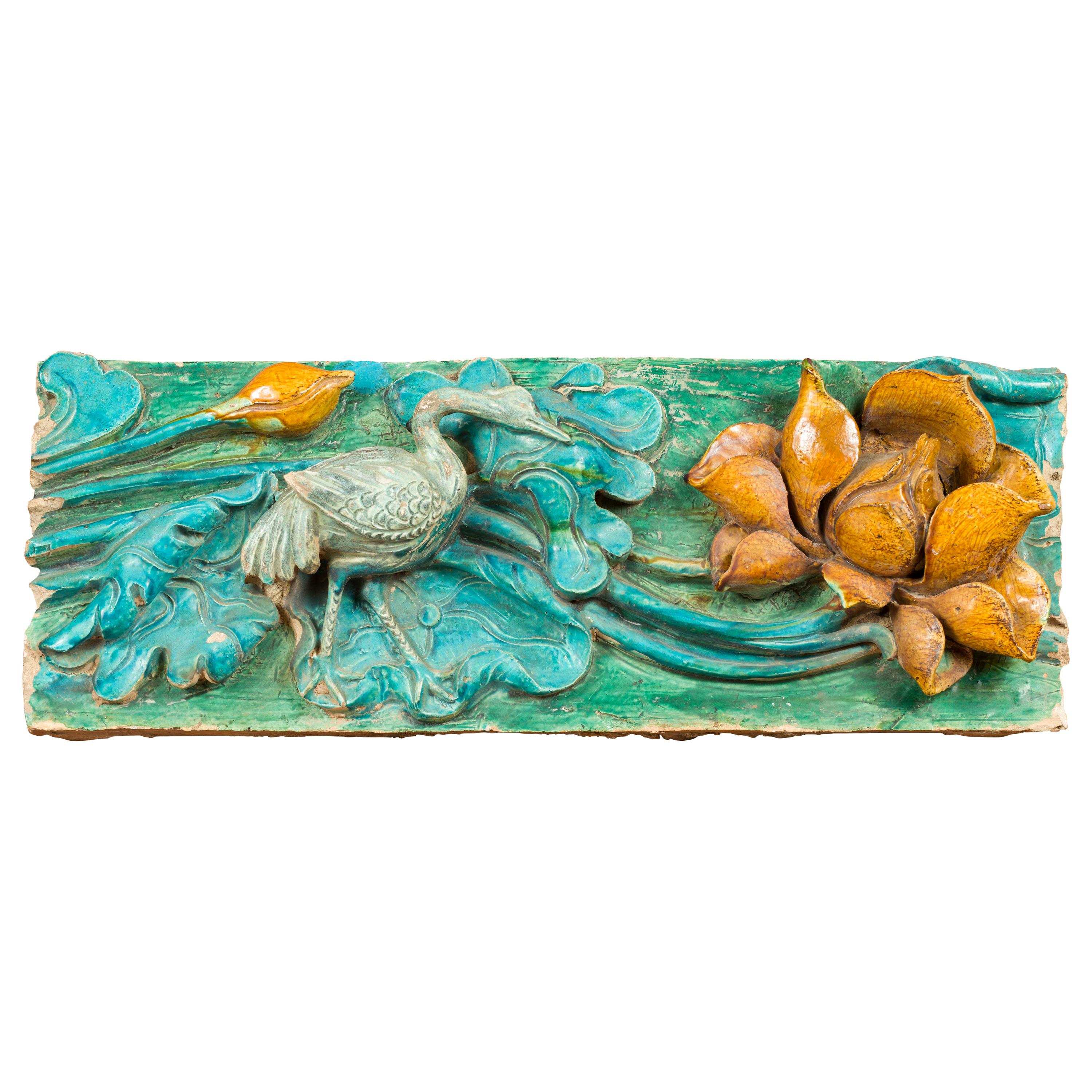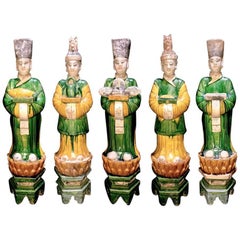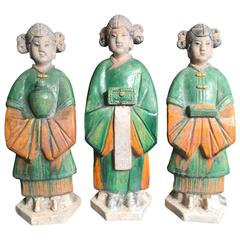
Important Ancient Chinese Trio Women Handmade Hand Glazed, Ming Dynsty 1368-1644
View Similar Items
Want more images or videos?
Request additional images or videos from the seller
1 of 10
Important Ancient Chinese Trio Women Handmade Hand Glazed, Ming Dynsty 1368-1644
About the Item
- Dimensions:Width: 4 in (10.16 cm)Length: 12.5 in (31.75 cm)
- Style:Ming (Of the Period)
- Materials and Techniques:
- Place of Origin:
- Period:
- Date of Manufacture:1500
- Condition:Wear consistent with age and use.
- Seller Location:South Burlington, VT
- Reference Number:1stDibs: LU128926774213
About the Seller
5.0
Platinum Seller
These expertly vetted sellers are 1stDibs' most experienced sellers and are rated highest by our customers.
Established in 1990
1stDibs seller since 2015
2,209 sales on 1stDibs
Typical response time: 1 hour
More From This SellerView All
- Important Ancient Chinese Effigy Pug Dog, Ming Dynasty 1368-1644Located in South Burlington, VTChina, a carving of a canine “Pug”, Ming Dynasty, 1368-1644 CE Dimensions: 38 cm, 15” High Photographs taken indoors and out of doors for your viewing pleasure. The hand carved limestone beast shown on its haunches with naturalistic joyful expression and a well defined compact head, ears, noes, eyes, feet, and tail parted to one side on reverse with distinctive collar ornament seated four square on a thick base all-over showing a weathered surface from significant age. Formerly exhibited “Asia Week” New York City, Fuller Building, Hutton Gallery 2006. Provenance: ex collection luoyang, Henan Province, China. Includes custom display base as shown Catalog reference: 35 years collecting 35 treasures, Number 35, p.76 (photo) In ancient China, it is a well-known fact that several types of small dogs were bred and were favored pet gifts between emperors and kings including Lion Dogs, Pekingese and Lo-sze breeds. Some Lo-sze are pictured wearing collars with bells a frequent combination fancied by European royalty of the seventeenth and eighteenth centuries. Lo-sze or pugs were prized for their compact body, good bones, flat face, square jaw, short coat, curled tail, side set back ears, and temperate disposition. History: Placing stone animals in important tombs can be traced back at least to the Qin Dynasty (221-206 BCE), some two thousand years ago. In ancient times, stone animals and human figures placed before imperial tombs symbolized royal power and privilege in addition to decorative functions. The first Ming tomb...Category
Antique 15th Century and Earlier Chinese Ming Sculptures and Carvings
MaterialsLimestone
- Chinese Vintage Pair Richly Hand-Glazed Leaf Garden StoolsLocated in South Burlington, VTAn attractive Chinese pair (2) of richly crackle glazed garden stools (garden seats), ornately black hand painted with a handsome leaf design . Beautifully executed and ready for y...Category
Late 20th Century Chinese Ceramics
MaterialsCeramic
- Japanese Tea Bowl Flying Bats & Good Fortune Hand-Built Hand GlazedLocated in South Burlington, VTMint condition From Japan, a hard to find and unusual hand-built, painted and glazed tea bowl featuring "flying bats" - signs of good fortune, created over thirty years ago. A stunn...Category
Late 20th Century Japanese Showa Ceramics
MaterialsCeramic, Pottery
- Japanese Fine Large Rooster And Birds Tea Bowl, Hand-Built and Hand GlazedLocated in South Burlington, VTMint Kyo ware bowl From Japan, a beautiful hand-built, painted and glazed, Kyo ware large bowl or large tea bowl with a proud rooster and birds motif created in the 1930s.- over se...Category
Vintage 1930s Japanese Showa Ceramics
MaterialsCeramic, Pottery
- China Important Carved Stone "Penjing" Garden Table, Qing Dynasty ‘1644-1911’Located in South Burlington, VTChina, a carved antique stone Penjing or painting form garden table, middle Qing dynasty (1644-1911), limestone, three pieces Dimensions: 34 inches high and 55 inches long and 16 in...Category
Antique Early 19th Century Chinese Qing Sculptures and Carvings
MaterialsLimestone
- Chinese Extraordinary "Moonlight Peaks" Natural "Painting"Located in South Burlington, VTExtraordinary natural stone work of art, one of a kind. This Chinese extraordinary natural stone "painting" suggestive of a group of mountain peaks landscape features light and dark colors, white, cream, yellow and dark green. This is called a dream stone Shih-Hua. They are cut from historic Dali marble found in the Cangshan Mountains of western China. These mysterious mountains, unique in the world, are known for yielding incredible and fantastic natural landscaped works of art created over tens of millions of years from mineral inclusions that affected the process of ancient organic material which transformed into limestone and finally resulted in marble- a metamorphic hard stone. It is a round cut stone and is set in a circular mat- the image suggests the appearance of a planet. This art form is centuries of years old since the Ming dynasty. Dream stones became favored art in the west particularly since the 19th century when French collectors named them Pierres de reve. This thin marble stone is approximately 1/4" thick and is cut from a large slab of rough material revealing incredible patterns in soft white and gray colors. Its weight is surprisingly modest- easily hung with standard hardware. On occasion, private collectors would invite an artisan to inscribe a poetic description onto their more important dream stones and in this case the artists' seal mark and calligraphy translation reads: Dimensions: Frame: 21 inches high and 24 inches wide. Site: 13 inches by 15 inches Provenance: Private Chinese collection, Yunnan, China. History of dream stone "moon light" works of art: Moonlight...Category
Late 20th Century Chinese Chinese and East Asian Rugs
MaterialsMarble
You May Also Like
- Impressive Terracotta Funerary Procession - Ming Dynasty, China '1368-1644 AD'Located in San Pedro Garza Garcia, Nuevo LeonImpressive Funeral Ensamble of 10 Terracotta Glazed Figures in green and caramel colors depicting a votive procession with a palanquin, his four carriers, a horse, a stableman, two musicians, and an offering carrier. This ensemble is accompanied by a Certificate of Authenticity, and Certificate of Expertise by Jean-Yves Nathan - Specialist in Asian Arts for the CEDEA (The European Confederation of Art Experts). Burial figurines of graceful dancers, mystical beasts, and everyday objects reveal both how people in early China approached death and how they lived. Since people viewed the afterlife as an extension of worldly life, these figurines, called mingqi, sometimes referred as “spirit utensils” or “vessels of ghosts” disclose details of routine existence and provide insights into belief systems over a thousand-year period. The Ming dynasty was the ruling dynasty of China – then known as the Empire of the Great Ming – for 276 years (1368–1644 AD). Founded by Chu Yuan-chang, the rebel leader that was successful in removing the mongols from the throne. Chinese control was re-asserted in China and eastern Asia. Literature became more important, schools were created, and the justice system was reformed. The Ming dynasty is described by some as "one of the greatest eras of orderly government and social stability in human history,” was the last imperial dynasty in China ruled by ethnic Han Chinese. The practice of burying ceramic objects with the deceased went into decline from the 10th to the 14th Century AD. There was a revival in placing miniature representations of glazed terracotta objects such a furniture, food offerings, horses, miniature statues...Category
Antique 15th Century and Earlier Chinese Ming Antiquities
MaterialsTerracotta
- Superb Set of 5 Elegant Court Attendants, Ming Dynasty, 1368-1644 AD TL TestedLocated in San Pedro Garza Garcia, Nuevo LeonA stunning set of 5 graceful terracotta figurines from the Ming Dynasty '1368-1644' AD. These elegant attendants are standing on a yellow glazed lotus flower over a high hexagonal green plinth and wear fine robes in matching green and yellow glazes. The unglazed areas have pigmented colors in red, black and white. Each is carrying essential offerings for the royal family. The head is detachable as often seen on the larger figures from this period. Meticulously detailed facial expressions have been hand-painted. Condition: Mint, finely preserved glaze and pigment, undamaged and no repairs. Provenance: Ex. Danish Collection. This set is guaranteed authentic and comes with a Certificate of Authenticity and TL Test from Laboratory Kotalla in Germany (The Oldest Thermoluminescence Testing Laboratory in the World). Dimensions: Average 54 H cms Burial figurines of graceful dancers, mystical beasts, and everyday objects reveal both how people in early China approached death and how they lived. Since people viewed the afterlife as an extension of worldly life, these figurines, called mingqi, sometimes referred as “spirit utensils” or “vessels of ghosts” disclose details of routine existence and provide insights into belief systems over a thousand-year period. The Ming dynasty was the ruling dynasty of China – then known as the Empire of the Great Ming – for 276 years (1368–1644 AD). Founded by Chu Yuan-chang, the rebel leader that was successful in removing the mongols from the throne. Chinese control was re-asserted in China and eastern Asia. Literature became more important, schools were created, and the justice system was reformed. The Ming dynasty is described by some as "one of the greatest eras of orderly government and social stability in human history,” was the last imperial dynasty in China ruled by ethnic Han Chinese. The practice of burying ceramic objects with the deceased went into decline from the 10th to the 14th Century AD. There was a revival in placing miniature representations of glazed terracotta objects such a furniture, food offerings, horses, miniature statues...Category
Antique 15th Century and Earlier Chinese Ming Antiquities
MaterialsTerracotta
- 6 Elegant Ming Dynasty Court Attendants in Glazed Terracotta, China 1368-1644 ADLocated in San Pedro Garza Garcia, Nuevo LeonA fine set of a six court attendants as in the Forbidden City of Beijing, elegantly dressed in a Green & Red Daopao – a traditional men’s formal attire from the Ming Dynasty dated 1368-1643 A.D. – with glazed robes and Red Pigment remains in their hat and belts. They stand in an honorary posture atop a red plinth, some with orifices in their hands, where spirit objects were placed to comfort or satisfy the deceased. The heads are detachable, as often seen on the larger figures from this period. They are accompanied by a Certificate of Authenticity, and Certificate of Expertise by Jean-Yves Nathan - a leading authority specialized in Far East Archaeology from the CEDEA (The European Confederation of Art Experts). Burial figurines of graceful dancers, mystical beasts, and everyday objects reveal both how people in early China approached death and how they lived. Since people viewed the afterlife as an extension of worldly life, these figurines, called mingqi, sometimes referred as “spirit utensils” or “vessels of ghosts” disclose details of routine existence and provide insights into belief systems over a thousand-year period. The Ming dynasty was the ruling dynasty of China – then known as the Empire of the Great Ming – for 276 years (1368–1644 AD). Founded by Chu Yuan-chang, the rebel leader that was successful in removing the mongols from the throne. Chinese control was re-asserted in China and eastern Asia. Literature became more important, schools were created, and the justice system was reformed. The Ming dynasty is described by some as "one of the greatest eras of orderly government and social stability in human history,” was the last imperial dynasty in China ruled by ethnic Han Chinese. The practice of burying ceramic objects with the deceased went into decline from the 10th to the 14th Century AD. There was a revival in placing miniature representations of glazed terracotta objects such a furniture, food offerings, horses, miniature statues...Category
Antique 15th Century and Earlier Chinese Ming Antiquities
MaterialsTerracotta
- Antique Chinese Wanli / Tianqi Kosometsuke Plate 1600-1644 Porcelain Ming MonkLocated in Amsterdam, Noord HollandLovely plate great scene of a monk Marked at base. Condition 1 line to rim and some rimfritting/mushikui. 2 firing flaws in base, 1 next to rim and 1 in circle. Size: 188 x 23...Category
Antique 17th Century Chinese Ming Ceramics
MaterialsPorcelain
$2,625 Sale Price20% Off - Chinese Ceramic Glazed Guardian Ming DynastyLocated in Atlanta, GAA stoneware figure depicting a seated armored warrior with a striking pose circa 15th-17th century. He is likely one of the four heavenly kings, th...Category
Antique 16th Century Chinese Ming Ceramics
MaterialsStoneware
- Chinese Ming Dish Blue & White porcelain, Tianqi or Chongzhen Circa 1620-1644Located in Lincoln, LincolnshireThis is a hand painted Chinese Export porcelain dish, which we date to the 17th century, Ming Dynasty, Tianqi or Chongzhen c.1620-1640 The dish is fairly thickly potted with a fai...Category
Antique 17th Century Chinese Ming Ceramics
MaterialsPorcelain
Recently Viewed
View AllMore Ways To Browse
Chinese Ming Statues
Chinese Head Dress
Han Statue
15th Century Chinese Porcelain
Antique Chinese Amber
Chinese Pottery Statue
Head Comb
Ming Dynasty Statue
Chinese Ming Dynasty Statues
Yuan Ming
Imperial Green Porcelain
White Porcelain Statue
Chinese Porcelain Statue
Asian Ming Statue
Chinese Ceramic Statues
Chinese Imperial Rug
Chinese Imperial Carpet
Han Dynasty Statue
